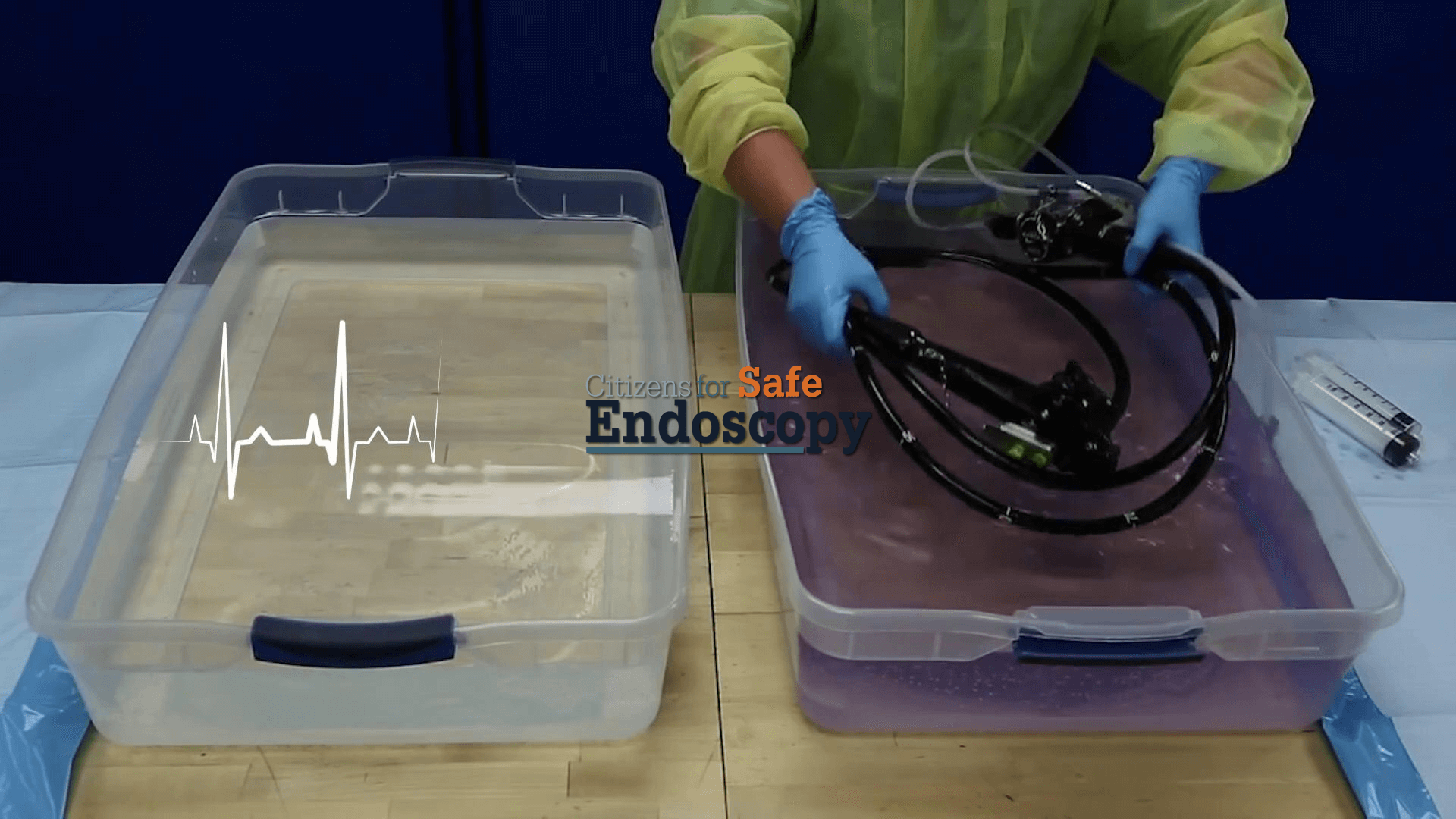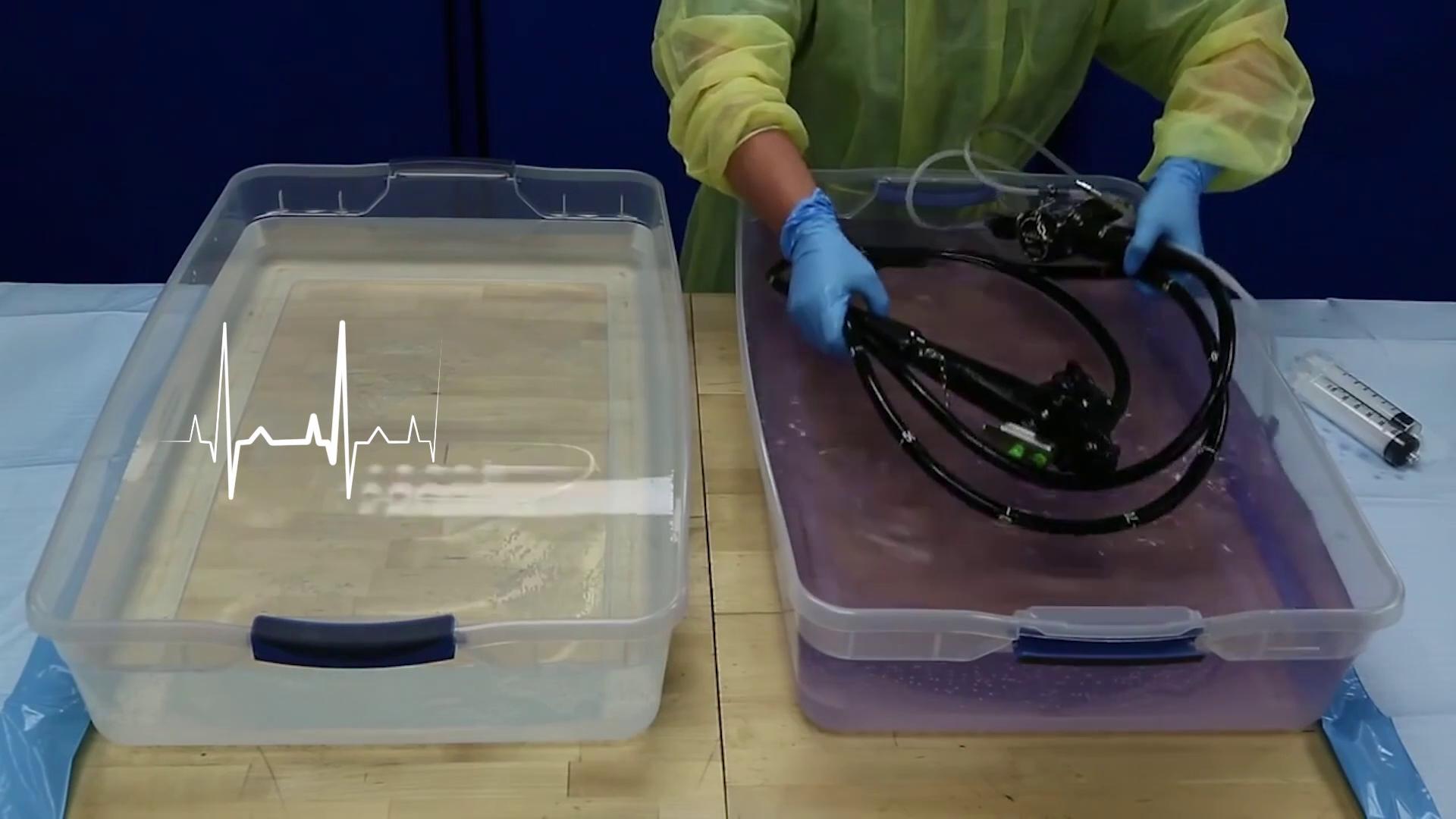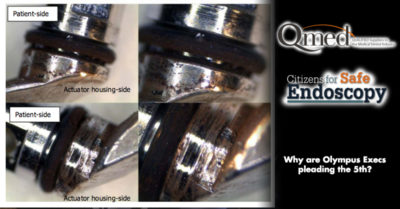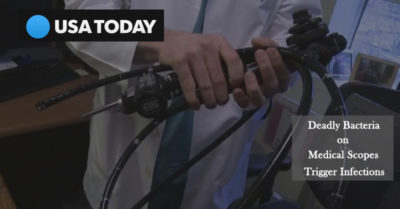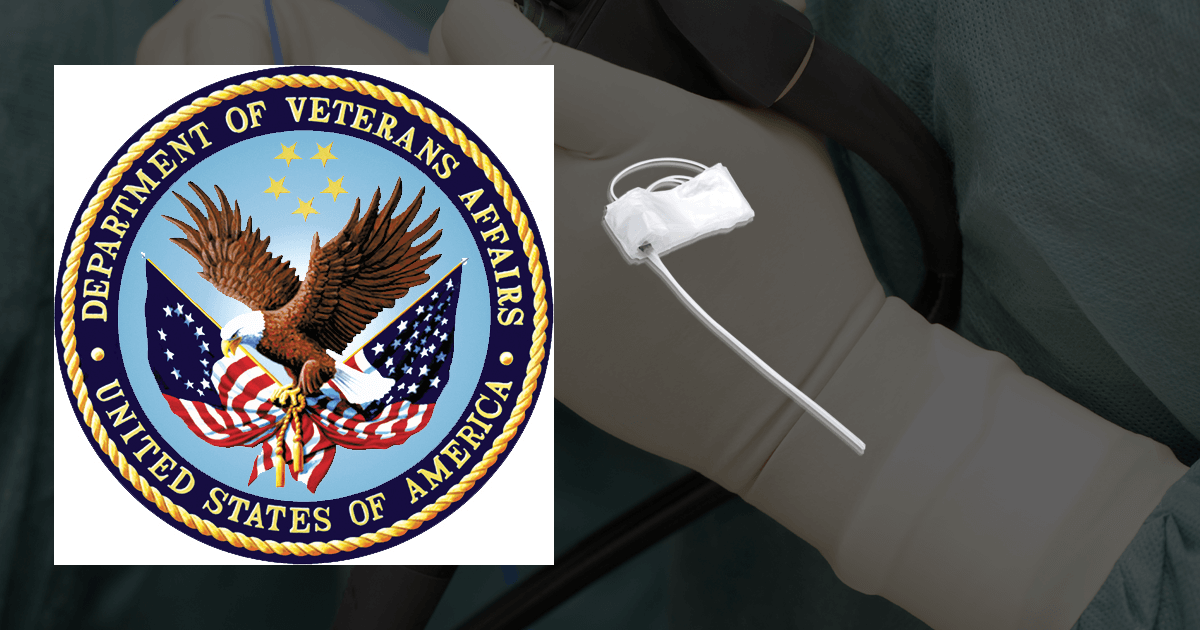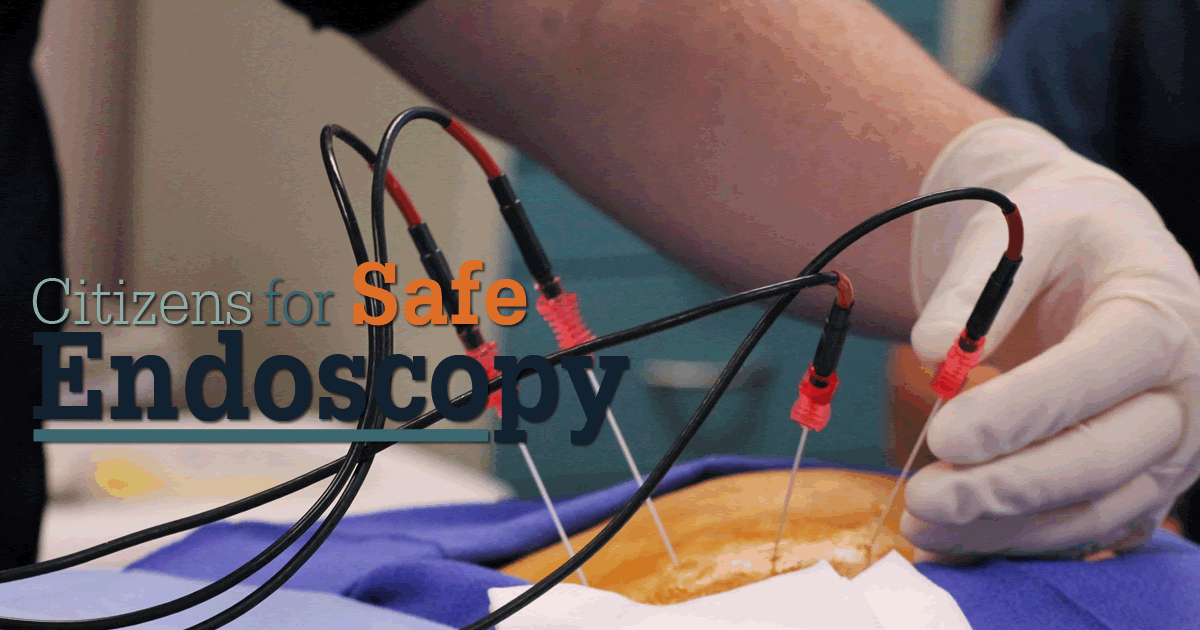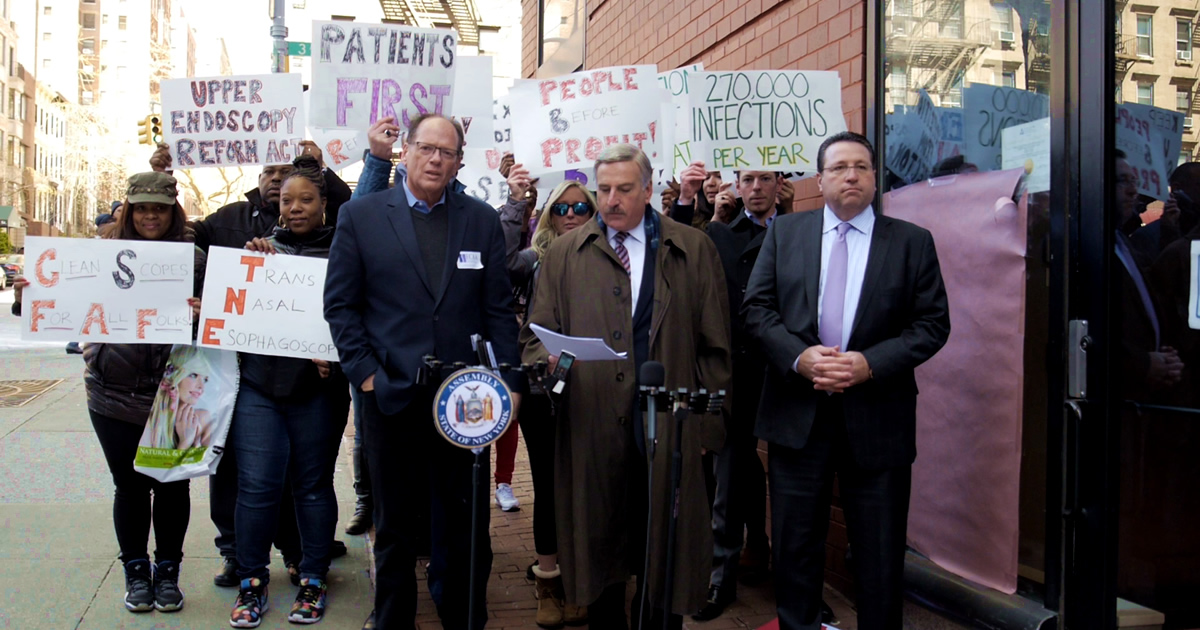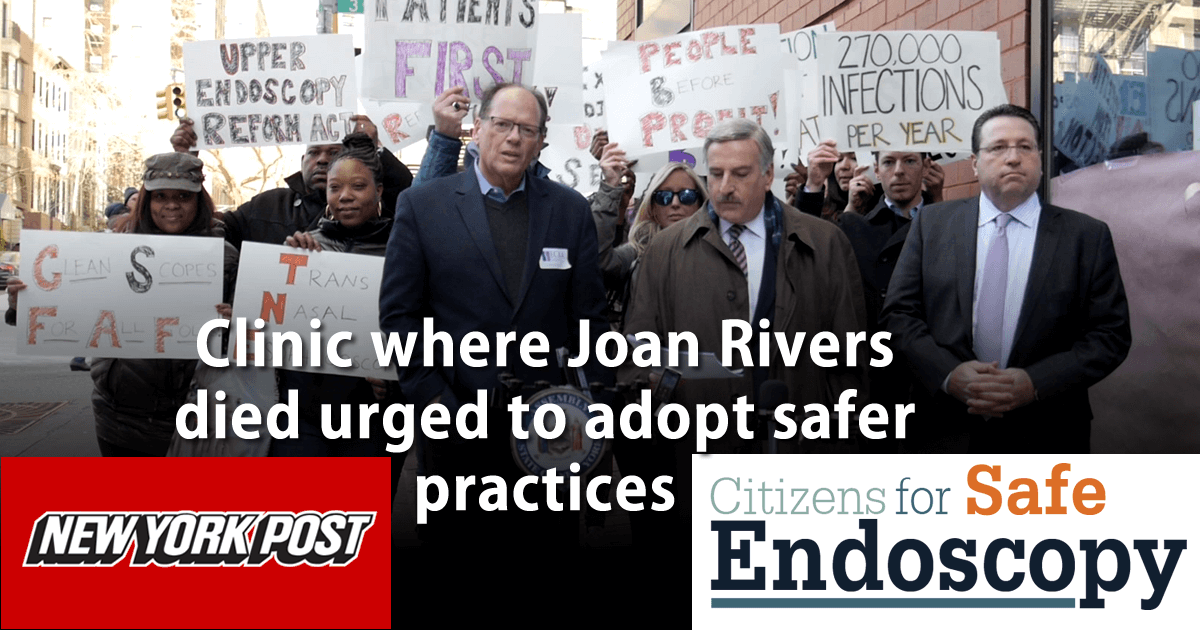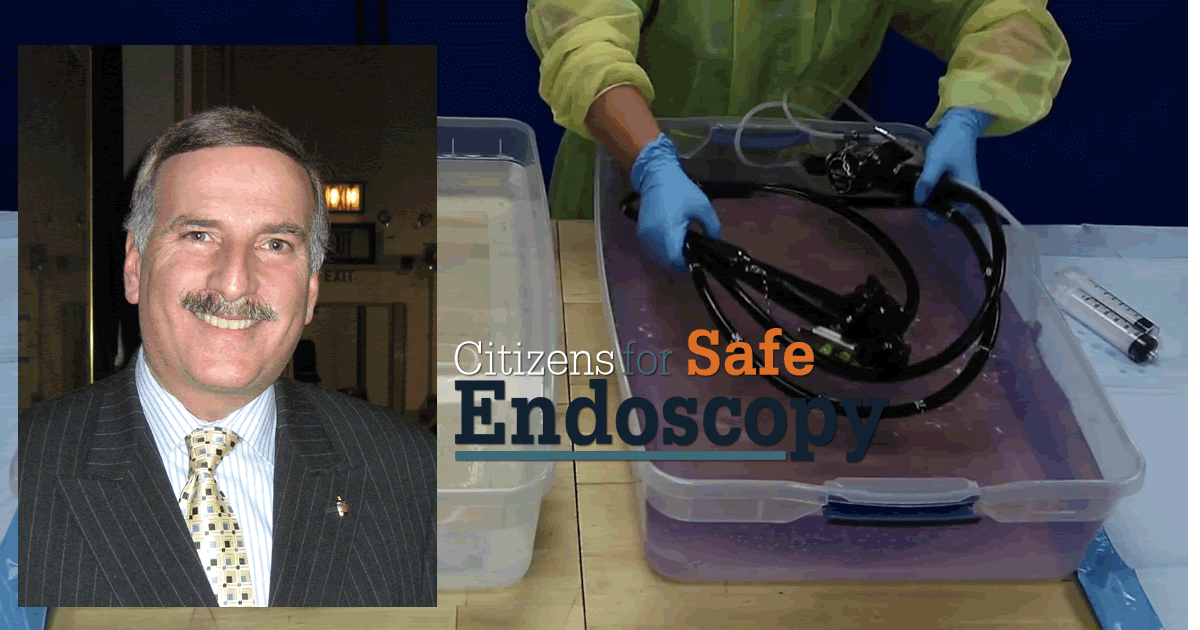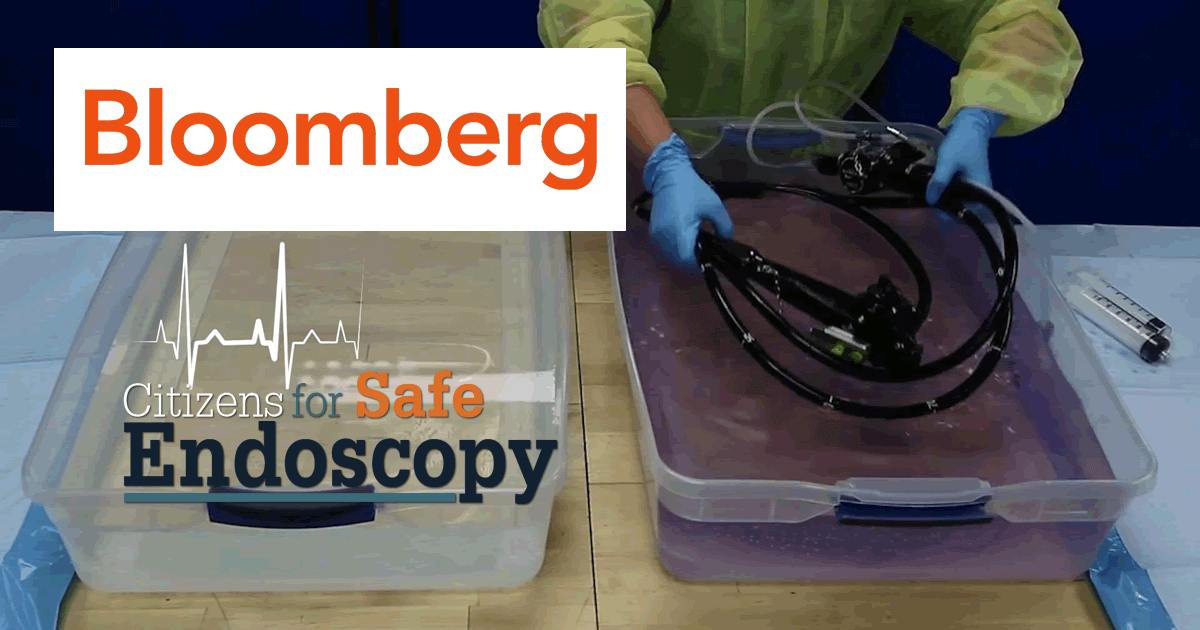The Solution to Safer Endoscopy
Our mission at Citizens for Safe Endoscopy is very simple. We believe that 270,000 Americans are being needlessly infected by non-sterile flexible endoscopes. Our mission is to educate patients that flexible endoscopes are disinfected as opposed to sterilized. Disinfection kills almost all microbial life, but not all. Infections such as Hepatitis, Tuberculosis, HIV, Human Papilloma Virus, and KJD (Mad Cow Disease), can live through the current reprocessing standard of disinfection. Flexible endoscopes have many grooves, nooks, and hard to reach edges that are impossible to clean. When scopes are serviced and taken apart, debris frequently discovered in these allegedly disinfected endoscopes are fecal matter, blood, and mucous. There is no reason why healthy patients are getting sick during colonoscopies, sigmoidoscopies, bronchoscopies, and other endoscopic procedures, when technology exists today to give every patient a sterile and safe endoscopy.
We need to change the standard of care to sterilization and we need a patient bill of rights where every patient is informed about the reprocessing standards of an endoscopy as well as other procedures.
Citizens for Safe Endoscopy is dedicated to preventing all future cases of cross-contamination due to endoscopic procedures. We believe that we can prevent 270,000 healthy patients from getting sick by
- Informing the public of this health epidemic and patients who may not even know that they have contracted a disease from cross-contamination
- Enlist as many people as possible to join our cause to fight for and protect the 15,000,000 people every year who have an endoscopic procedure and to make sure that these endoscopies are safe and sterile.
- Building a coalition of victims, concerned citizens and health professionals to fight against the needless amount of cross-contamination.
- Lobbying for legislation all across the country to change the standard of care in the reprocessing of endoscopes from disinfection to sterilization.
- Prevent this archaic practice and push the medical profession to use the new technology out there to achieve complete sterilization.
- Convince the hospitals, doctors, and other medical facilities to explore all new technologies to achieve standard, including, but not limited to, protective single-use barrier devices.
WHAT IS ENDOSCOPY?
Endoscopic procedures are typically performed on an outpatient basis and generally involve less recovery time and patient discomfort than traditional surgery. The patient benefits and cost savings associated with endoscopy have caused many governmental reimbursement programs and private health insurance plans to encourage the use of endoscopic procedures in a number of medical applications.Endoscopy is a minimally invasive technique that is being used to visually examine patients internally using a probe-like device inserted through the mouth or other orifices. It is used with increased frequency in a growing number of medical applications. Endoscopic therapeutic procedures, unlike more traditional open surgical procedures, can be performed without a major incision, in most cases without general anesthesia, and, therefore, safer and less expensive than traditional surgical procedures.
The Problem
Endoscopes were originally designed for their optics and function, not for cleanability – after all, they are used in non-sterile areas of the body. Endoscope manufacturers are well aware of the problems inherent in their design because in the process of repairing endoscopes, they must remove the stained and contaminated channels. These channels contain blood, mucous, feces and numerous diseases and bacteria. In fact, endoscopes are impossible to sterilize. In fact, your dentist’s drill is much cleaner than an endoscope.
Is there no doctor in Salem, Oregon that performs TNE? I called the only ENT clinic here and they only go look at the voice box area and said you have to go to a GI doctor for esophogeal issues. This is the state capitol and we should not be so behind the times….For heaven’s sake, this should be the “standard of care” for people who do not want the old sedated endoscopy.
Thank you,
– Karen
– Salem Oregon
The Solution
A proprietary flexible endoscope system designed to eliminate the risk of cross-contamination to patients and health-care professional’s also provides quick changeover between patients by eliminating the difficult task of cleaning the endoscopes. The risk of cross-contamination results from the reuse of conventional flexible endoscopes. This system consists of two main components; a proprietary sterile disposable sheath and a reusable flexible endoscope. The endosheath is designed to cover all surfaces of the endoscope that come into contact with the patient and contains the air, water, suction and accessory channels that are a part of conventional flexible endoscopes, thus providing a contamination-free instrument and substantially reducing the burdensome cleaning required of conventional flexible endoscopes. The Sheath technology is not available for all endoscopic procedures, but some doctors who are concerned about this deadly issue use the Sheath regularly for Transnasal Endoscopic procedures (TNE).
What is TransNasal Endoscopy?
Transnasal Endoscopy using digital full screen, CCD and LED technology, combined with a disposable Endosheath (TNE/DE), represents the best and most effective method for esophageal examinations in the current medical environment.
TNE/DE is the only currently available technology that combines:
- Image quality
- Procedure-related cost containment
- Patient and staff safety
- Improved professional reimbursement outcomes
- Control of patient related costs and expenditures
- Diagnostic capability equal to current video-endoscopy
- Improved manpower-related logistics
Over the past 20 years there has been a significant increase in esophageal cancer, in particular adenocarcinoma of the EG junction, driven largely by the continued dramatic increase in reflux-related disease including Barrett’s esophagus. This has heightened the demand for investigative endoscopy to provide early detection, diagnosis and prevention of esophageal cancer.
During this same period of time, there has been a concomitant decline in available manpower (namely the number of Physician-providers), combined with increased competition for skilled Endoscopists’ time due to the burden of screening colonoscopy. In addition, we continue to experience an adversarial insurance environment with accelerated downward pressure on reimbursements, and the increased burden on the patient by factors such as rising premiums, co-pays, and lost productivity and income as the result of time lost due to having to undergo sedated procedures. Read more about TransNasal Endoscopy…
Latest News:
Widow presses case that Olympus hushed scope problems as infections spread
Theresa Bigler’s case is the first to go to trial in the U.S. stemming from a series of deadly superbug outbreaks across the country that were linked to contaminated medical scopes. She is suing Olympus Corp., claiming that one of its tainted devices caused the infection that led to her husband’s death in August 2013.
New enzyme blocks gluten, relieves symptoms of gluten intolerance
New research may have found an enzyme that can relieve symptoms in gluten-sensitive people.
Why Are Olympus Execs Pleading The Fifth?
Three of Olympus Corp.’s top executives stayed mum when grilled about emails tied to deadly scope-related infections.
USA Today: Deadly Bacteria on Medical Scopes Trigger Infections
The deadly pattern of illnesses began to emerge in 2012 at hospitals in Seattle, Pittsburgh, Chicago. In each case, the culprit was a bacteria known as CRE, perhaps the most feared of superbugs, because it resists even "last defense" antibiotics — and kills up to 40% of the people it infects.
VA Directive including EndoSheath
From United States Department of Veterans Affairs: On March 23, 2016 the National Program Office for Sterile Processing put out a directive (attached) to all Veterans Health Facilities around the country. The directive was issued [...]
Radiofrequency Ablation Can Reverse Barrett’s Esophagus, Reduce Cancer Risk
From New York Presbyterian Hospital: Newswise — Patients who have gastroesophageal reflux disease (GERD) for a prolonged period have an increased risk of developing Barrett's esophagus, a pre-cancerous condition where the tissue lining the esophagus becomes [...]
Qmed: How Olympus’s Superbug Problem Just Got Worse
A new congressional report finds that infections related to a special endoscope, mostly manufactured by Olympus, were even more widespread than previously thought.
VIDEO: Medical Industry Call for Action At Place Where Joan Rivers Met Her Fate…
New York Assemblyman David Weprin, Bill Drake of the Esophageal Cancer Awareness Association and David Schwartz of Citizens for Safe Endoscopy gather at the medical office where comedian Joan Rivers died as a result of [...]
NY Post: Clinic where Joan Rivers died urged to adopt safer practices
Members of Citizens for Safe Endoscopy flocked to Yorkville Endoscopy on the Upper East Side, where the Joan Rivers went into cardiac arrest during minor throat surgery in September 2014, to demand that doctors tell patients about a safer procedure.
MEDIA ADVISORY: Assemblyman David Weprin, Citizens for Safe Endoscopy Join to Propose Life-Saving, Cost-Cutting ‘Upper Endoscopy Reform Act’
New York State Assemblyman David Weprin, Citizens for Safe Endoscopy and Bill Drake of the Esophageal Cancer Awareness Association to introduce the “Upper Endoscopy Reform Act”
Bloomberg: Senate Report Says FDA Fails to Ensure Medical Devices Are Safe
From Bloomberg: The report, from Senator Patty Murray, a Washington Democrat, blames device manufacturers, hospitals, and the Food and Drug Administration for infections that sickened at least 250 people worldwide since 2012 and that may have [...]
Daily News: Sedated endoscopic procedures, like Joan Rivers’, waste $15B
From the New York Daily News: The medical community, medical device makers and government agencies are allowing patients to blow billions a year by allowing unnecessary endoscopic procedures. Members of the medical community, certain medical [...]
